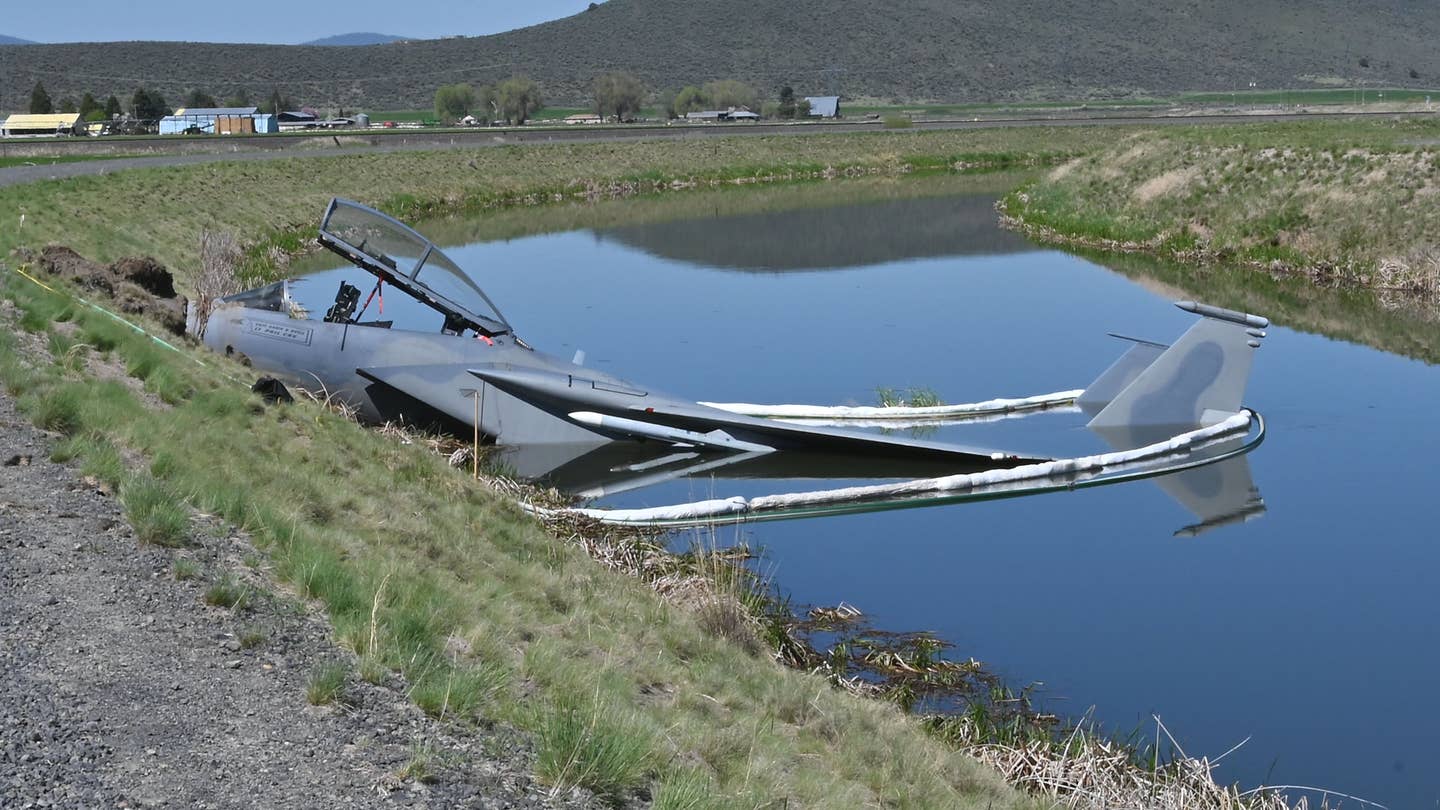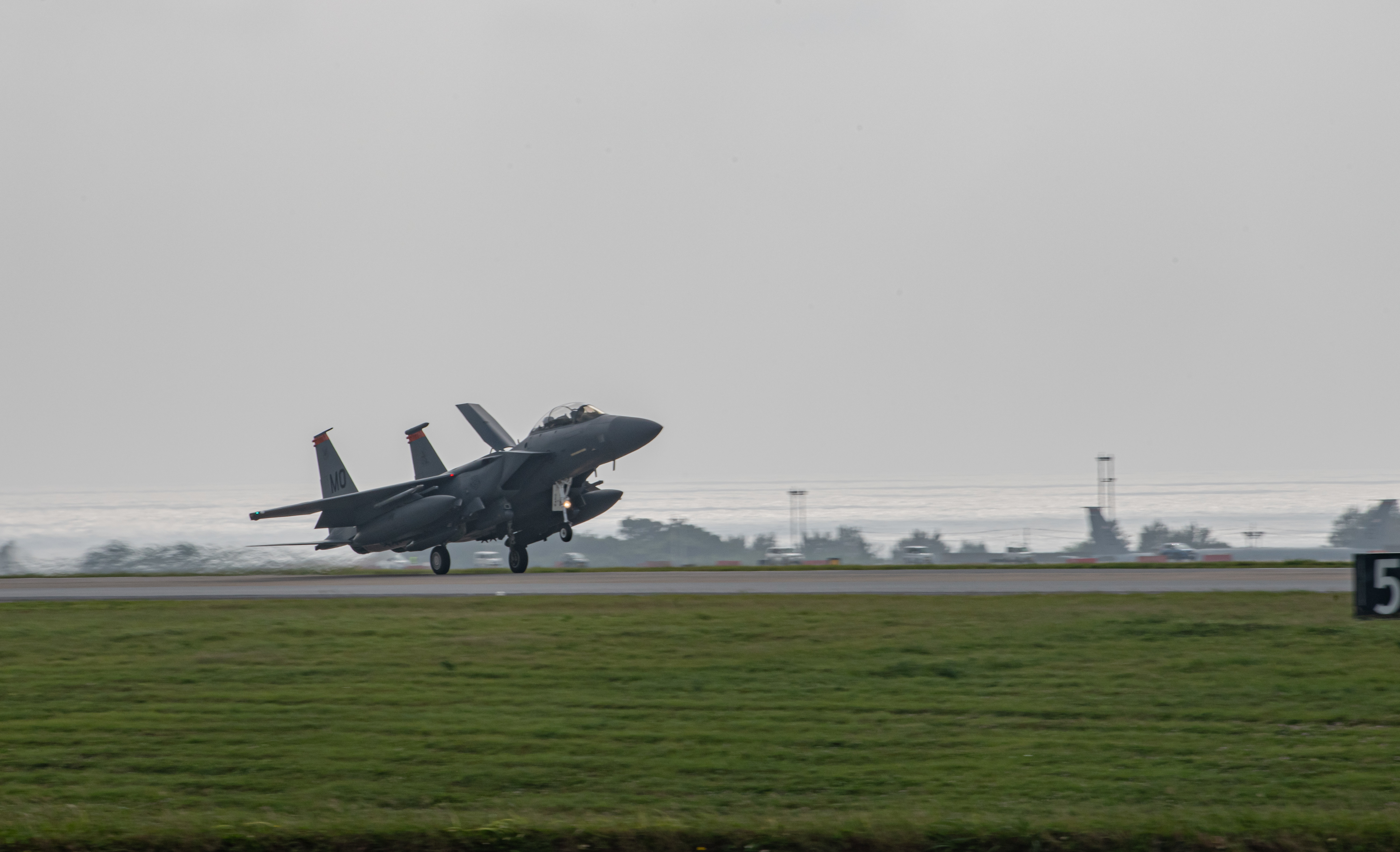On May 15, at Kingsley Field, Oregon, an F-15D fighter aircraft belonging to the Oregon Air National Guard encountered an incident where it slid off the runway and ended up in an irrigation canal.
The pilot managed to escape with only minor injuries and was promptly discharged from the hospital, as announced by the 173rd Fighter Wing.
According to a press release issued by the wing, the accident occurred at approximately 3:15 p.m. local time after a routine training mission.
Despite being a two-seat F-15D aircraft, only one crew member was present—an instructor pilot—on board at the time, as stated in an official statement. The service has released a photograph of the F-15D aircraft involved in the incident.
From the picture, it is clear that the two-seat aircraft ended up submerged in a canal that seems quite deep and runs along the southern end of Kingsley Field.

In a rather unfortunate twist of events, the nose of the Eagle appears to have struck the canal’s bank, compounding the damage caused by the mishap.
Kingsley Field serves as the primary operating base for the 173rd Fighter Wing and is also recognized as the sole F-15C/D schoolhouse within the U.S. Air Force.
To prevent any potential fuel leakage into the irrigation canal, overseen by the Bureau of Reclamation, the F-15D aircraft has been encircled with absorbent booms.
In a statement, Col. Micah Lambert, the Vice Commander of the 173rd Fighter Wing, reassured that there are no indications of petroleum product leakage from the aircraft based on their initial evaluation of the canal water.
Lambert emphasized that minimizing the environmental impact is paramount and that precautionary measures have been implemented.
“We have taken precautionary measures and placed absorbent booms around the aircraft to prevent the flow of fuel, or other substances, downstream in the event there is a leakage,” Lambert noted.
Lambert further mentioned that the wing is actively conducting continuous water sampling to monitor and identify any potential presence of petroleum products in the water, according to the press release from the 173rd Fighter Wing.
As the water conceals most of the airframe, it becomes difficult to ascertain the true extent of the inflicted damage, apart from the visibly mangled nose. It is presumed that the landing gear and undersides of the jet bore the brunt of the impact, though the feasibility of restoring this aircraft remains uncertain.
F-15 C/D Fighter Jet
The F-15C/D is a versatile and highly capable fighter jet designed for air superiority missions. It features avionics, powerful engines, and a robust weapons system that allows it to engage and defeat enemy aircraft in various combat scenarios.
The F-15C is a single-seat variant primarily used by the U.S. Air Force, while the F-15D is a two-seat trainer version. Both variants have been crucial assets in maintaining air superiority for several decades, with the F-15D also serving as a platform for training new pilots.
However, due to their aging fleet and the introduction of newer aircraft models, such as the F-15EX, the F-15C/D is gradually being phased out of active service.
As of September 2022, the Air Force’s inventory consists of a limited number of F-15D aircraft, with only 18 units remaining.
These remaining aircraft are primarily allocated to the Air National Guard. On average, these F-15D jets have exceeded 30 years of service, indicating their age and the need for potential replacements or upgrades in the near future.

Meanwhile, the need for restoring the aircraft involved in the incident may be rendered unnecessary, given the planned transition from F-15C/D jets to the F-15EX at Kingsley Field.
The Oregon Air National Guard, including the 173rd Fighter Wing, is expected to be among the first recipients of the new Eagle II aircraft.
However, the delivery timeline may still be subject to potential delays. Additionally, the 142nd Fighter Wing at Portland Air National Guard Base is also slated to receive the new F-15EX jets as part of the scheduled upgrades.
The U.S. Air Force is also undertaking a process to replace the aging F-15C/D fighter jets stationed at Kadena Air Base in Japan. The goal is to introduce newer, more advanced fighter aircraft that align with evolving operational requirements and technological advancements.
- Contact the author at ashishmichel(at)gmail.com
- Follow EurAsian Times on Google News




